Abstract
Albino rats were given ochratoxin A (6.6 mg/kg body weight) intraperitoneally or per os. Independent of route administration, 6% of a given dose was excreted as the toxin, 1 to 1.5% as (4R)-4-hydroxyochratoxin A, and 25 to 27% as ochratoxin alpha in the urine. The metabolite (4S)-4-hydroxyochratoxin A, which is formed by rat liver microsomes in the presence of NADPH, was not detected. Only traces of ochratoxins A and alpha were found in feces. Identical experiments were carried out with brown rats, since the Km value for the formation of the 4S epimer was considerably lower when brown rat microsomes were used. About the same ratios of metabolites and metabolite recoveries as those found for albino rats were found for brown rats. Brown rats were also given the two hydroxylated metabolites and ochratoxin alpha (0.66 mg/kg body weight) intraperitoneally. The three compounds were excreted in the urine; within 48 h, 90% recovery of ochratoxin alpha and 54 and 35%, respectively, of the 4R and 4S isomers were observed.
Full text
PDF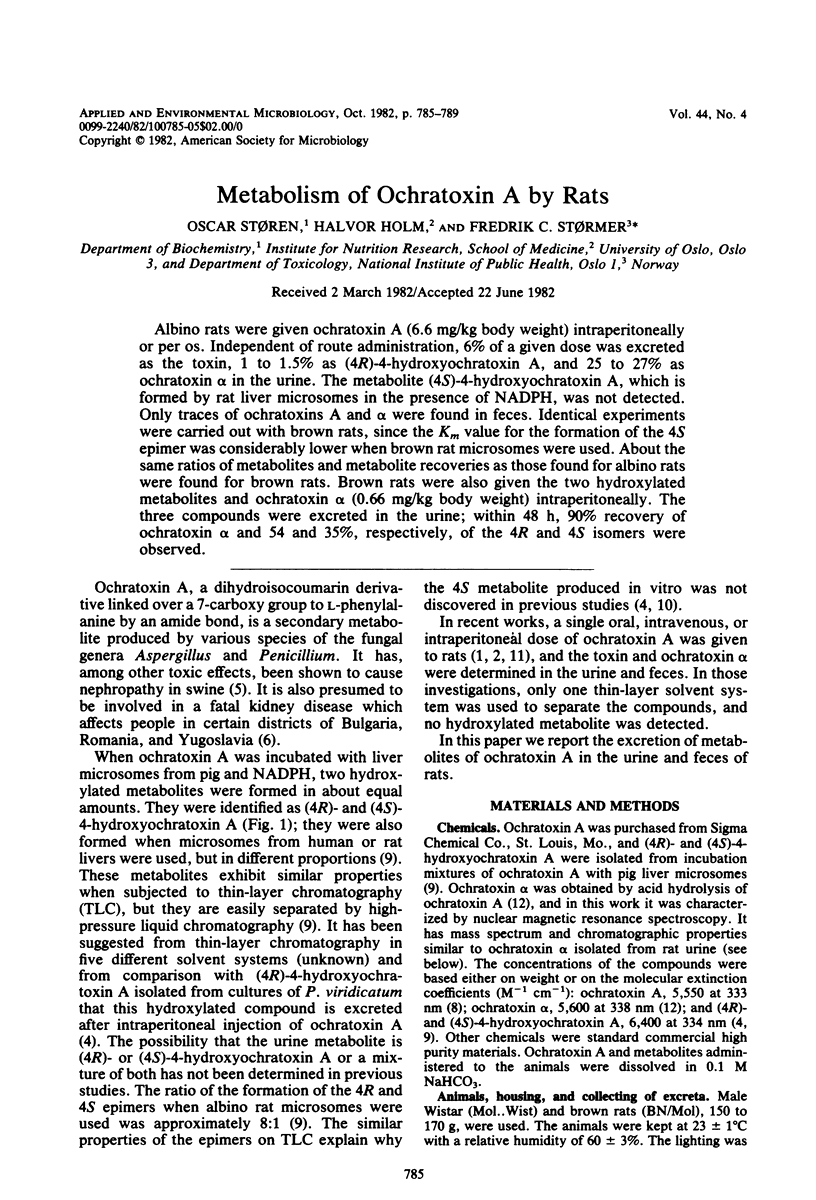
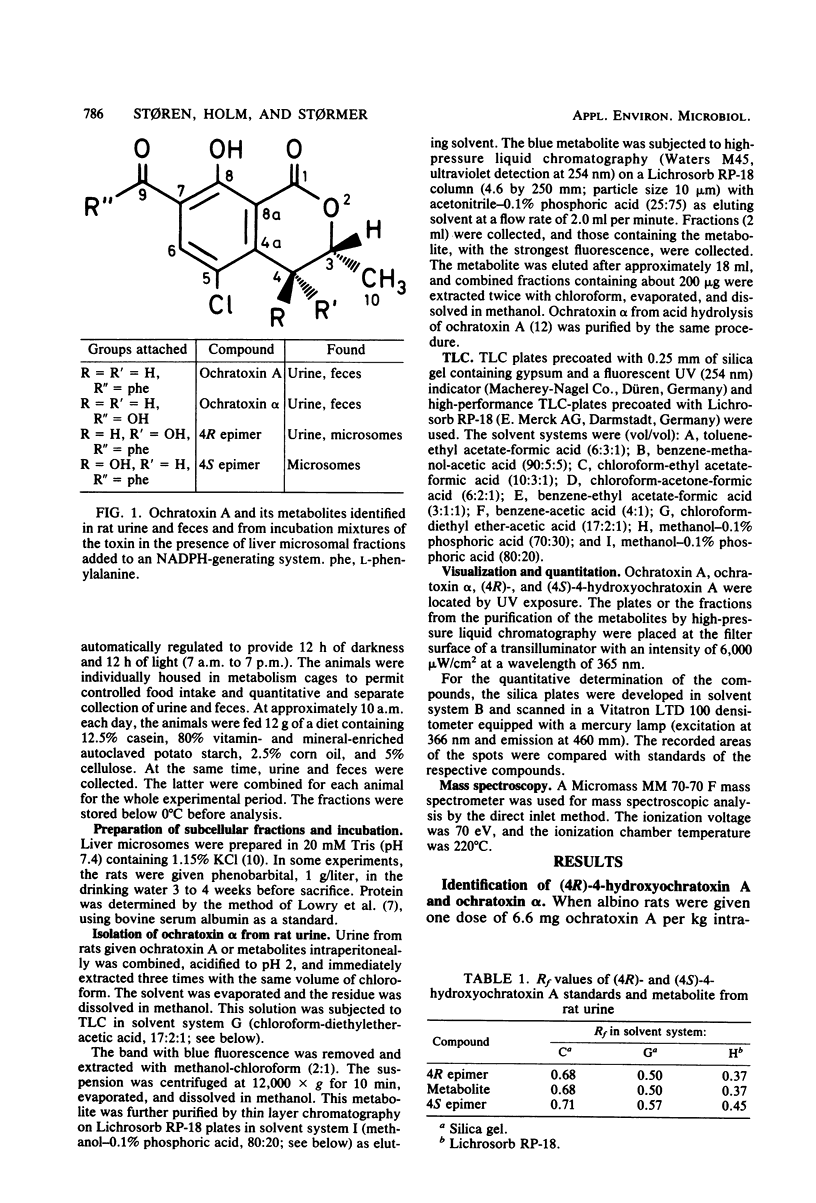
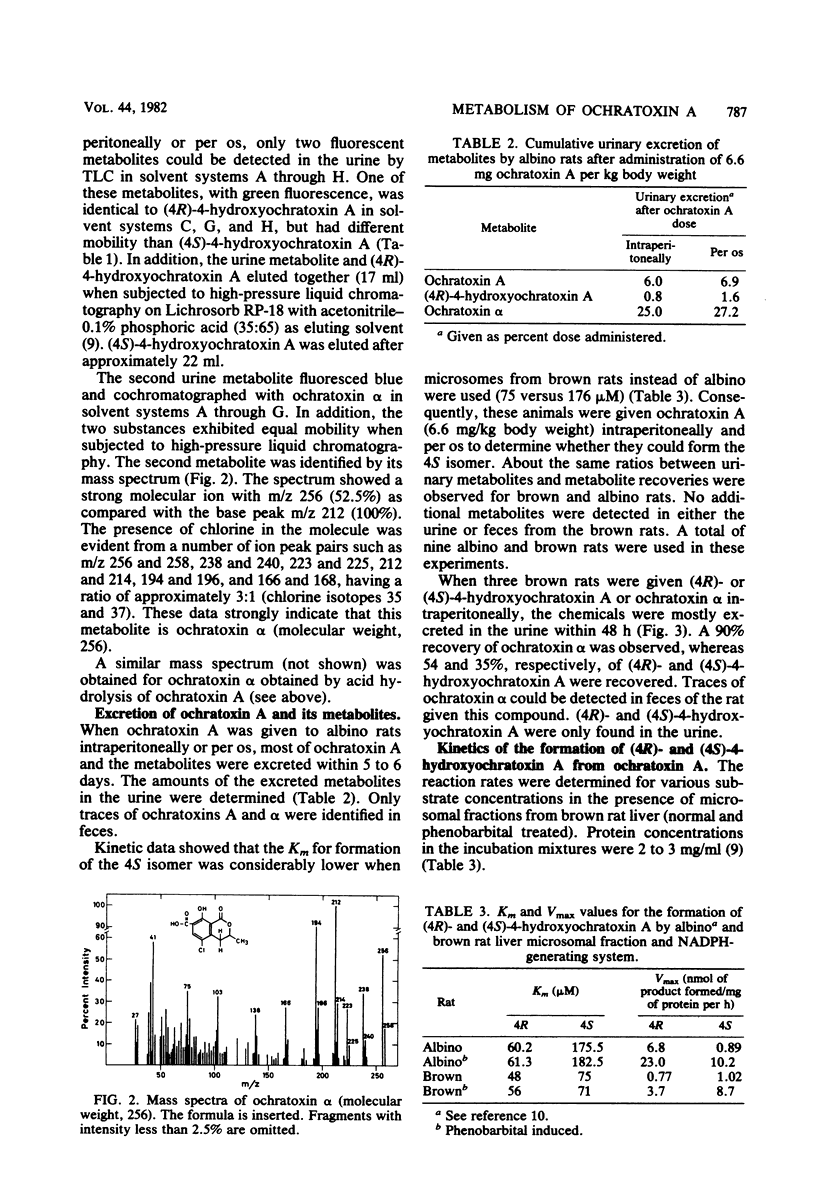
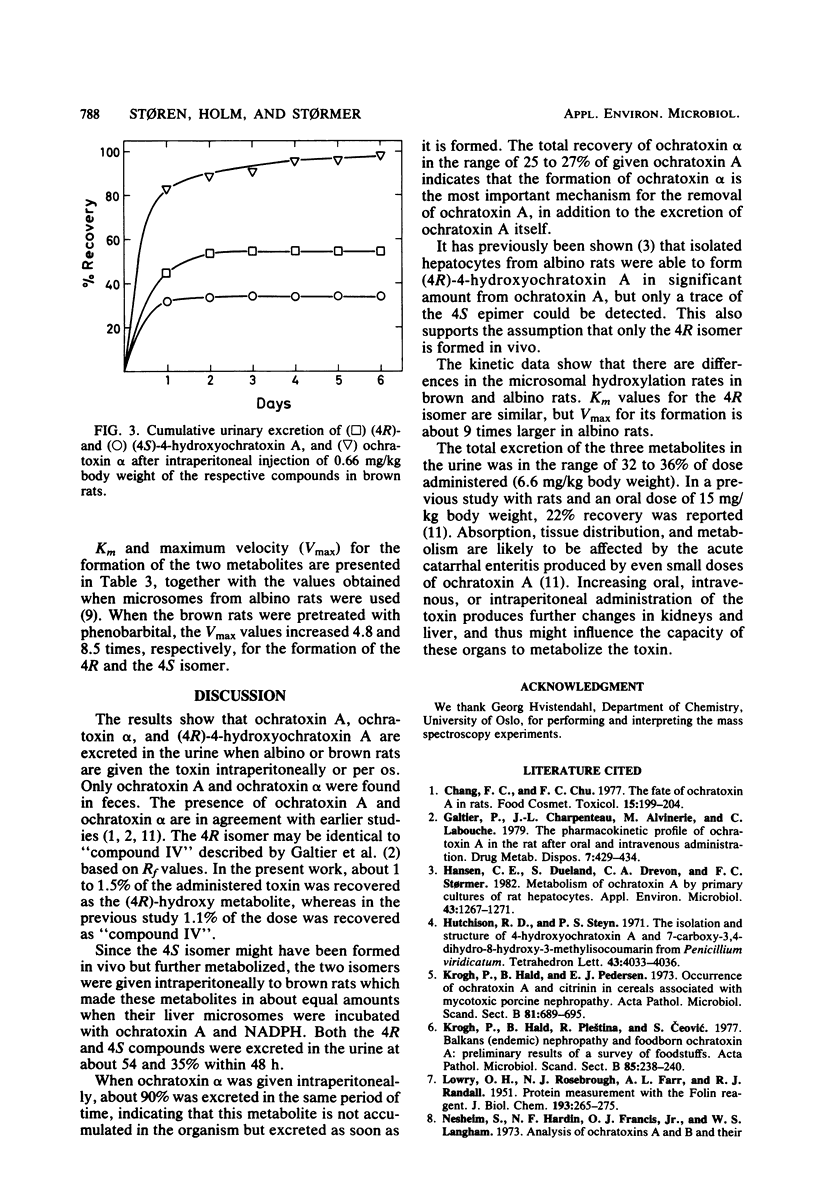
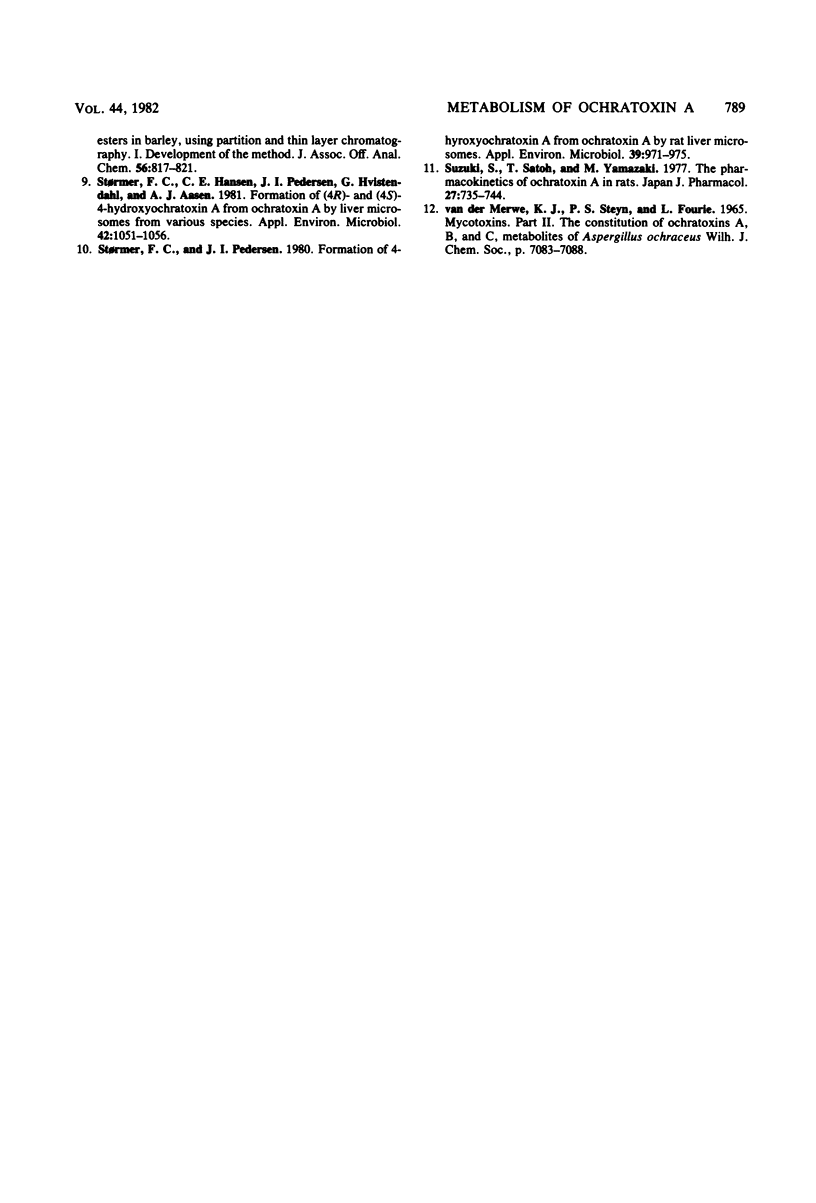
Selected References
These references are in PubMed. This may not be the complete list of references from this article.
- Chang F. C., Chu F. S. The fate of ochratoxin A in rats. Food Cosmet Toxicol. 1977 Jun;15(3):199–204. doi: 10.1016/s0015-6264(77)80390-8. [DOI] [PubMed] [Google Scholar]
- Galtier P., Charpenteau J. L., Alvinerie M., Labouche C. The pharmacokinetic profile of ochratoxin A in the rat after oral and intravenous administration. Drug Metab Dispos. 1979 Nov-Dec;7(6):429–434. [PubMed] [Google Scholar]
- Hansen C. E., Dueland S., Drevon C. A., Størmer F. C. Metabolism of ochratoxin A by primary cultures of rat hepatocytes. Appl Environ Microbiol. 1982 Jun;43(6):1267–1271. doi: 10.1128/aem.43.6.1267-1271.1982. [DOI] [PMC free article] [PubMed] [Google Scholar]
- Krogh P., Hald B., Pedersen E. J. Occurrence of ochratoxin A and citrinin in cereals associated with mycotoxic porcine nephropathy. Acta Pathol Microbiol Scand B Microbiol Immunol. 1973 Dec;81(6):689–695. doi: 10.1111/j.1699-0463.1973.tb02261.x. [DOI] [PubMed] [Google Scholar]
- Krogh P., Hald B., Plestina R., Ceović S. Balkan (endemic) nephropathy and foodborn ochratoxin A: preliminary results of a survey of foodstuffs. Acta Pathol Microbiol Scand B. 1977 Jun;85(3):238–240. doi: 10.1111/j.1699-0463.1977.tb01702.x. [DOI] [PubMed] [Google Scholar]
- LOWRY O. H., ROSEBROUGH N. J., FARR A. L., RANDALL R. J. Protein measurement with the Folin phenol reagent. J Biol Chem. 1951 Nov;193(1):265–275. [PubMed] [Google Scholar]
- Størmer F. C., Hansen C. E., Pedersen J. I., Hvistendahl G., Aasen A. J. Formation of (4R)- and (4S)-4-hydroxyochratoxin A from ochratoxin A by liver microsomes from various species. Appl Environ Microbiol. 1981 Dec;42(6):1051–1056. doi: 10.1128/aem.42.6.1051-1056.1981. [DOI] [PMC free article] [PubMed] [Google Scholar]
- Størmer F. C., Pedersen J. I. Formation of 4-hydroxyochratoxin A from ochratoxin A by rat liver microsomes. Appl Environ Microbiol. 1980 May;39(5):971–975. doi: 10.1128/aem.39.5.971-975.1980. [DOI] [PMC free article] [PubMed] [Google Scholar]
- Suzuki S., Satoh T., Yamazaki M. The pharmacokinetics of ochratoxin A in rats. Jpn J Pharmacol. 1977 Oct;27(5):735–744. doi: 10.1254/jjp.27.735. [DOI] [PubMed] [Google Scholar]
- Van der Merwe K. J., Steyn P. S., Fourie L. Mycotoxins. II. The constitution of ochratoxins A, B, and C, metabolites of Aspergillus ochraceus Wilh. J Chem Soc Perkin 1. 1965 Dec;:7083–7088. doi: 10.1039/jr9650007083. [DOI] [PubMed] [Google Scholar]


